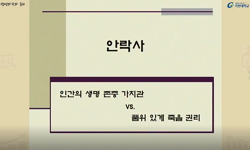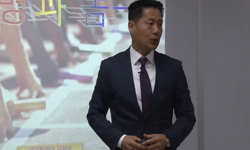Kim Ji-Ha’s aesthetics is based on life or universal life. The life has basic mechanism, ‘Cheon-Ji-In(Heaven, earth, and human being)’. There is a human between heaven and earth, that is, there are the heaven and earth inside the human. It means...
http://chineseinput.net/에서 pinyin(병음)방식으로 중국어를 변환할 수 있습니다.
변환된 중국어를 복사하여 사용하시면 됩니다.
- 中文 을 입력하시려면 zhongwen을 입력하시고 space를누르시면됩니다.
- 北京 을 입력하시려면 beijing을 입력하시고 space를 누르시면 됩니다.

‘흰 그늘’의 미학과 한국시의 향방(向方) - 김지하의 시와 미학사상을 중심으로 = The Aesthetics of ‘White Shadow’ and the Direction of Korean Poetry - Focused on Kim Ji-Ha’s Poems and Aesthetics
한글로보기https://www.riss.kr/link?id=A108043945
-
저자
이재복 (한양대)
- 발행기관
- 학술지명
- 권호사항
-
발행연도
2022
-
작성언어
Korean
-
주제어
Life ; Universal life ; Jeongchegongneung ; Heaven·earth·human ; Gi ; Han ; Shadow ; White shadow ; Aura. ; 생명 ; 우주생명 ; 정체공능 ; 천지인 ; 기 ; 한 ; 그늘 ; 흰 그늘 ; 아우라
-
등재정보
KCI등재
-
자료형태
학술저널
- 발행기관 URL
-
수록면
39-82(44쪽)
-
KCI 피인용횟수
0
- DOI식별코드
- 제공처
-
0
상세조회 -
0
다운로드
부가정보
다국어 초록 (Multilingual Abstract)
My eagerness aims at the birth of universal life. The human internal mind is placed at the center. As the human mind is not different with ‘heaven and earth’s one’, the mind follows the ethics of ‘the ways of heaven’. It says his aesthetics cannot be understood only with human basic aesthetic dimension, and the aesthetics and ethics are to be understood within integrated dimension. The union of aesthetics and ethics shows his concept of aesthetics is based on the tradition of ritual and music in eastern Asia. The ritual corresponds to the eagerness in human mind. In this context the unique aesthetics such as ‘Han’, ‘Sagim’, ‘Sigimse’, ‘Teum’, ‘Ut’, ‘Sinmyoung’, ‘shadow’, ‘white shadow’, and ‘Yul-Ryeo’ can be born. He is trying to find it in Korean folk art like ‘Pansori’, and ‘Talchum’, and organize it aesthetically.
As the aesthetics and ethics are seen in the life at the same time, he tries to see the superficial flower(aesthetics) as well as the hidden ‘fierce power of core(ethics)’. He thinks that the universe without fierceness and eagerness is nothing but the fake one losing its aura. It is not difficult to find the case without shadow, the ethics, in recent Korean poetry. The loss of the god, which is to be welcomed and respected, living in human mind and aura means the loss of universal life. If the human loses the mind in the world where heaven, earth and human are intertwined, they cannot meet the subtle, mysterious, exciting, and spiritual beauty that is different with rational and emotional one. The whole he is saying is ‘the white shadow’, and the systematic reveal is ‘the aesthetic of the white shadow’.
When we consider that the aesthetics based on life and universal life is regarded as universal discourse, it needs to be reconsidered to limit in the only ‘folk aesthetics’ or eastern Asian aesthetics. The aesthetics of the white shadow is desirable to be discussed in the field of universal discourse and in the dimension of human history for theorizing and practicing the aesthetics. It is clear his poems as the product of the white shadow and its aesthetic have a piercing eye and prospect to save the world indulging in the beauty “refined as optional and comfortable one” without pain and denial in “infestation of self-loving identity”. It needs more time to discuss the aesthetics of the white shadow, its keen insight and forecast more deeply.
Kim Ji-Ha’s aesthetics is based on life or universal life. The life has basic mechanism, ‘Cheon-Ji-In(Heaven, earth, and human being)’. There is a human between heaven and earth, that is, there are the heaven and earth inside the human. It means that the heaven’s extreme energy reaches my body, and I welcome heaven’s god into myself. As his concept of the life is caused by Donghak’s ideology, it is possible to add new analysis of human being. The thought of human means that the subject which is respected is toward myself, and it reveals the logic that the universe moves depending on the degree of my eagerness.
My eagerness aims at the birth of universal life. The human internal mind is placed at the center. As the human mind is not different with ‘heaven and earth’s one’, the mind follows the ethics of ‘the ways of heaven’. It says his aesthetics cannot be understood only with human basic aesthetic dimension, and the aesthetics and ethics are to be understood within integrated dimension. The union of aesthetics and ethics shows his concept of aesthetics is based on the tradition of ritual and music in eastern Asia. The ritual corresponds to the eagerness in human mind. In this context the unique aesthetics such as ‘Han’, ‘Sagim’, ‘Sigimse’, ‘Teum’, ‘Ut’, ‘Sinmyoung’, ‘shadow’, ‘white shadow’, and ‘Yul-Ryeo’ can be born. He is trying to find it in Korean folk art like ‘Pansori’, and ‘Talchum’, and organize it aesthetically.
As the aesthetics and ethics are seen in the life at the same time, he tries to see the superficial flower(aesthetics) as well as the hidden ‘fierce power of core(ethics)’. He thinks that the universe without fierceness and eagerness is nothing but the fake one losing its aura. It is not difficult to find the case without shadow, the ethics, in recent Korean poetry. The loss of the god, which is to be welcomed and respected, living in human mind and aura means the loss of universal life. If the human loses the mind in the world where heaven, earth and human are intertwined, they cannot meet the subtle, mysterious, exciting, and spiritual beauty that is different with rational and emotional one. The whole he is saying is ‘the white shadow’, and the systematic reveal is ‘the aesthetic of the white shadow’.
When we consider that the aesthetics based on life and universal life is regarded as universal discourse, it needs to be reconsidered to limit in the only ‘folk aesthetics’ or eastern Asian aesthetics. The aesthetics of the white shadow is desirable to be discussed in the field of universal discourse and in the dimension of human history for theorizing and practicing the aesthetics. It is clear his poems as the product of the white shadow and its aesthetic have a piercing eye and prospect to save the world indulging in the beauty “refined as optional and comfortable one” without pain and denial in “infestation of self-loving identity”. It needs more time to discuss the aesthetics of the white shadow, its keen insight and forecast more deeply.
동일학술지(권/호) 다른 논문
-
- 한국시학회
- 김문주
- 2022
- KCI등재
-
- 한국시학회
- 김창욱
- 2022
- KCI등재
-
- 한국시학회
- 방승호
- 2022
- KCI등재
-
- 한국시학회
- 김응교
- 2022
- KCI등재
분석정보
인용정보 인용지수 설명보기
학술지 이력
| 연월일 | 이력구분 | 이력상세 | 등재구분 |
|---|---|---|---|
| 2025 | 평가예정 | 재인증평가 신청대상 (재인증) | |
| 2022-01-01 | 평가 | 등재학술지 선정 (계속평가) |  |
| 2021-12-01 | 평가 | 등재후보로 하락 (재인증) |  |
| 2018-01-01 | 평가 | 등재학술지 유지 (등재유지) |  |
| 2015-01-01 | 평가 | 등재학술지 유지 (등재유지) |  |
| 2011-01-01 | 평가 | 등재학술지 유지 (등재유지) |  |
| 2009-01-01 | 평가 | 등재학술지 유지 (등재유지) |  |
| 2006-01-01 | 평가 | 등재학술지 선정 (등재후보2차) |  |
| 2005-05-26 | 학술지등록 | 한글명 : 한국시학연구외국어명 : The Korean Poetics Studies |  |
| 2005-01-01 | 평가 | 등재후보 1차 PASS (등재후보1차) |  |
| 2003-01-01 | 평가 | 등재후보학술지 선정 (신규평가) |  |
학술지 인용정보
| 기준연도 | WOS-KCI 통합IF(2년) | KCIF(2년) | KCIF(3년) |
|---|---|---|---|
| 2016 | 0.67 | 0.67 | 0.74 |
| KCIF(4년) | KCIF(5년) | 중심성지수(3년) | 즉시성지수 |
| 0.74 | 0.71 | 1.366 | 0.11 |




 KCI
KCI DBpia
DBpia






